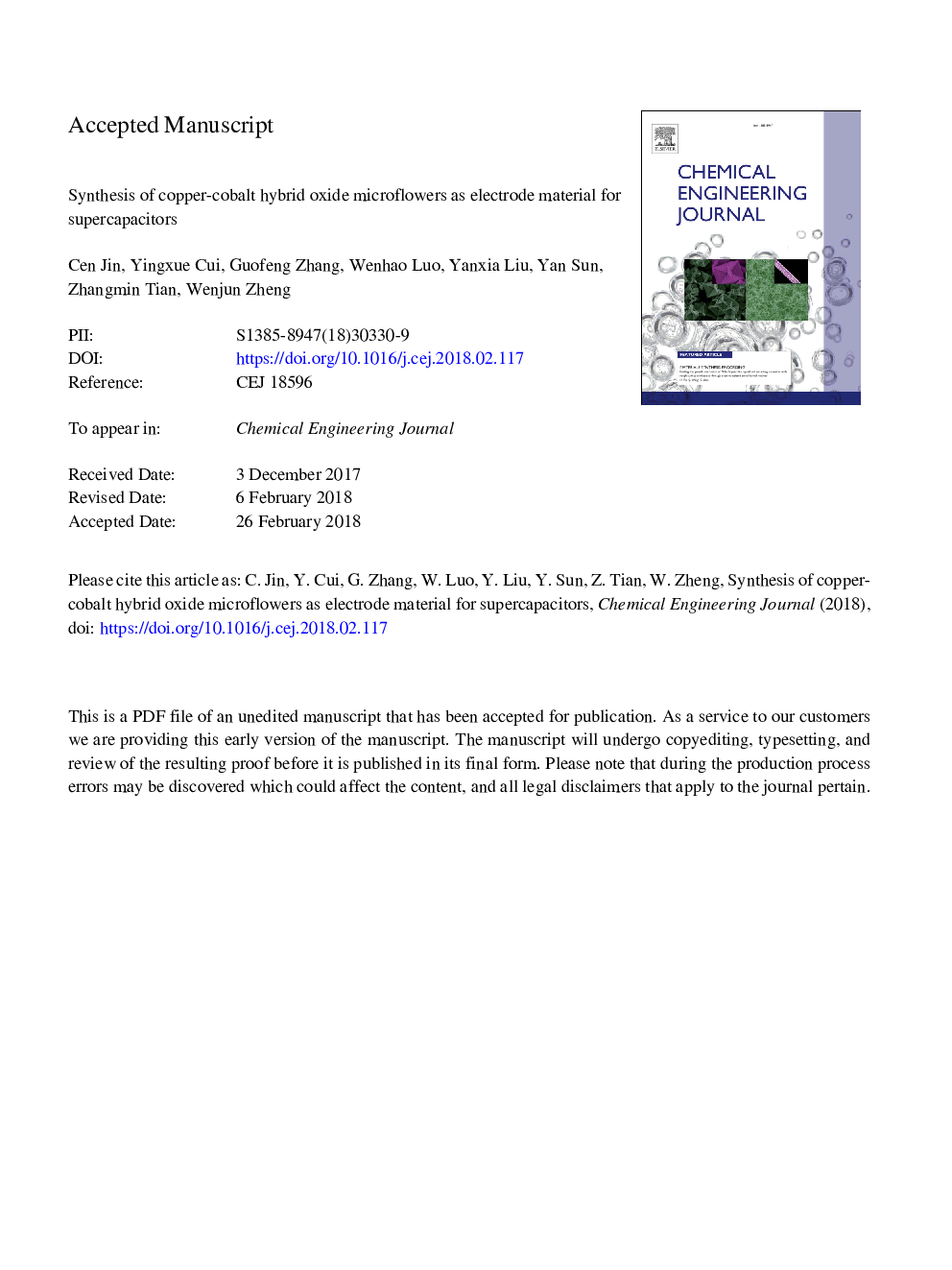| Article ID | Journal | Published Year | Pages | File Type |
|---|---|---|---|---|
| 6579868 | Chemical Engineering Journal | 2018 | 27 Pages |
Abstract
Copper-cobalt hybrid oxide (CuCoO-H) microflowers were prepared by a cost-effective and facile two-step growth-annealing approach toward supercapacitor electrode materials. The unique architecture obtained by adjusting the calcination atmosphere, ultrathin nanosheets with small nanocrystallites providing high specific surface area and appropriate mesoporous structure enhancing electrolyte penetration, as well as synergistic effect among CuCo2O4, Cu2O and CoO makes the CuCoO-H display excellent electrochemical performances, showing the advantages of novel hybrid strategy, which shed new light on searching cheap and efficient electrode materials for supercapacitors. The CuCoO-H electrodes showed outstanding electrochemical stability, after 10,000 cycles of measurements at a current density of 3â¯Aâ¯gâ1, retaining 99.4% of the initial specific capacitances and impressive high-rate capability (405.36â¯Fâ¯gâ1 at 20â¯Aâ¯gâ1). Furthermore, the CuCoO-H as the positive electrode and active carbon as the negative electrode constitute an asymmetric supercapacitor, exhibiting a high energy density of 32.2â¯Wâ¯hâ¯kgâ1 at the power density of 644â¯Wâ¯kgâ1. At last, two asymmetric supercapacitors were assembled in series to light a red commercial light-emitting diodes (LEDs) for the practical application.
Keywords
Related Topics
Physical Sciences and Engineering
Chemical Engineering
Chemical Engineering (General)
Authors
Cen Jin, Yingxue Cui, Guofeng Zhang, Wenhao Luo, Yanxia Liu, Yan Sun, Zhangmin Tian, Wenjun Zheng,
